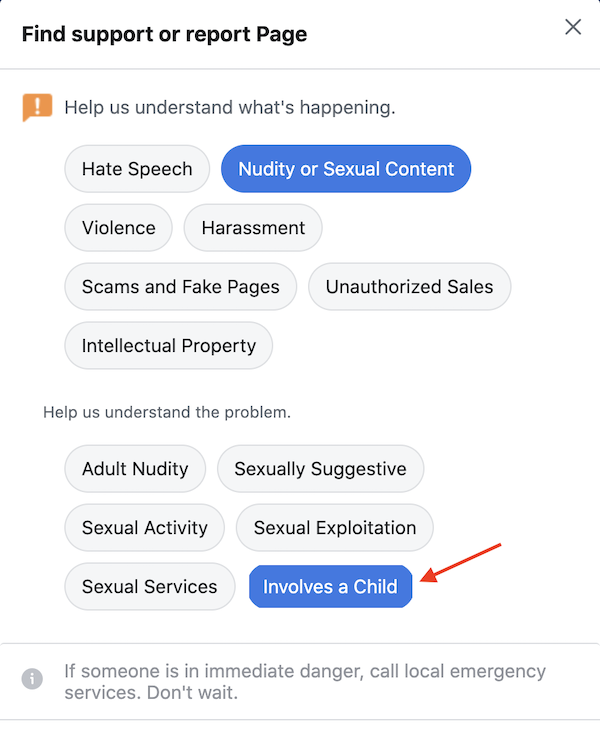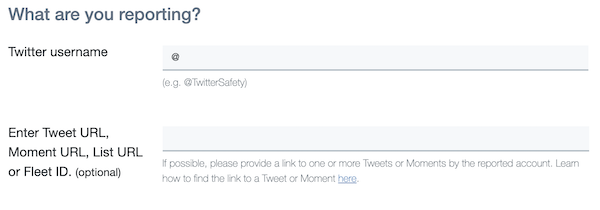By Tony Salvatore, M.A.
Police officers frequently have contact with suicidal adolescents and teens. It is far less common for them to become involved with younger children exhibiting suicidal behavior, but this may be changing.
Preteen suicides in the United States are rare but increasing. Suicidal behaviors ranging from ideation to nonfatal attempts also are becoming progressively more common in preadolescents.
If current trends continue, police officers and other first responders can expect to receive a growing number of mental health calls involving suicidal children. They also will have to cope with the aftermath of more suicides by children in coming years.
Suicide prevention training for police officers does not usually cover suicidal behavior and suicides in preteens. Agencies must remedy this. Officers may be among the first to encounter this problem in their communities.
Incidence
It once was widely believed that young children did not take their own lives because they could not grasp the concept of suicide.1 However, in the late 1980s, research showed that suicide claimed a number of victims at an early age and that as many as 12 percent of school-age children experienced suicidal ideation.2
Mr. Salvatore directs suicide prevention and postvention efforts at Montgomery County Emergency Service in Norristown, Pennsylvania.
Even very young children engage in nonfatal suicidal behavior.3 This creates serious suicide risk in childhood that individuals carry into adolescence, young adulthood, and beyond.
Frequency
Early childhood suicidality has made a mark on the health system in the United States. A review of admissions to 31 pediatric hospitals from 2005 to 2015 found almost 15,000 cases of suicidal ideation or suicide attempts by children 5 to 11 years of age.4
Assessments of children ages 10 to 12 presenting to emergency departments in three urban medical centers found 30 percent positive for suicide risk. One in five of the children had made a previous suicide attempt.5 This suggests that emergency departments should screen for suicide risk in all children, even as early as 10 years old.
Although they may have access to only a limited range of lethal means, young children are capable of suicide.6 In 2014, the Centers for Disease Control and Prevention (CDC) for the first time listed suicide as the 10th-leading cause of death for children ages 5 to 11.7 It was the ninth-leading cause of violence-related death for children ages 5 to 9 in 2015.8
Between 1993 and 2012, 657 children in the United States ages 5 to 11 years old died by suicide.9 This is an average of 33 child suicides per year.
Young children can develop suicide plans readily within their capability to carry out.10 One study found that 1 in 10 children ages 3 to 7 acknowledged thoughts of suicide, expressed what appeared to be plans, and acted in a manner that looked like an attempt.11
Demographics
Early childhood suicidality is more common in boys and is associated with attention deficit hyperactivity disorder (ADHD), oppositional defiant disorder, and conduct disorder.12
In one study, victims mostly included black male children who died by hanging, strangulation, or suffocation.13 Data on suicides involving children 5 to 11 years old from 1993 to 1997 and from 2008 to 2012 showed a significant increase in suicides of young black children and a notable decline of suicides in white preadolescents between the two periods. This shift has not presented in other age groups. The increase in suicides among black children is a notable departure from the distribution of suicides by race for all ages and particularly for young children.14
Risk Factors and Warning Signs
Suicidal behavior in preschoolers relates to impulsivity, running away, hyperactivity, morbid ideas, high pain tolerance, not crying after injury, and parental neglect.15 A family history of suicidal behavior, exposure to physical and sexual abuse, preoccupation with death, and prior suicide attempts are additional factors to consider.16
Impulsivity is a prominent characteristic of preteen suicides. For children ages 5 to 11, “impulsive responding” to arguments, conflicts, relationship problems with family members and friends, and other adverse environmental and life situations is a trigger for early childhood suicide.17 Children may lack the ability to foresee their lives getting better or to comprehend the temporary nature of some problems.
Notably, mental illness plays a smaller role in suicidal behavior in preadolescents than in older children.18
Misclassification
It can prove difficult to decisively quantify preadolescent suicide because authorities may misclassify young children’s suicides as accidents or otherwise unintentional deaths.19 This represents a particular problem in the black community.20 Preteen suicide victims leave notes less often than teenagers do and have less access to lethal means, such as firearms, which can raise doubts about suicide as the cause of death.21
Misclassification also may result, at least in part, from old beliefs some coroners and medical examiners still share about the suicidal capability of young children. The fact that accidental deaths and unintentional injuries are the leading cause of death in children under age 14 also can influence this judgment.22 Individuals may not readily see preteen deaths by falls and even by hanging as suicides.
Theory
Most models attempting to explain suicide focus on teens, adults, and elders. However, one theoretical paradigm suggests how suicidal behavior may arise in anyone, including young children. The interpersonal-psychological theory explains how overcoming the natural resistance to lethal self-harm can result in a suicide attempt.23
According to this theory, a suicide attempt may occur when two factors exist: 1) an intense desire to die and 2) the capacity for self-harm.24 The former arises from negative self-perceptions, a poor self-image, and unfavorable social comparisons.25 The latter is associated with a high tolerance to pain, diminished fear of severe injury, and lowered fear of death.26 This “acquired capability” becomes established over time through exposure to hurtful, painful, or violent experiences, such as self-injury, physical or sexual abuse, or bullying.27
Circumstances that contribute to suicidality in young children include—
- decreased self-esteem;
- belief that they hold responsibility for some family problem (e.g., divorce);
- feeling worthless or like a burden to the family;
- not feeling valued;28
- violent interactions between parents, which may cause children to believe they are worthless and expendable;29
- bullying and being bullied;30
- parental abuse and neglect, which may produce self-directed aggression;31
- having a sibling who attempted suicide;32 and
- experiencing conflict, aggression, and abuse in the household.33
Suicide threats and attempts relate to antisocial behavior and hostility toward parents in children 5 to 12 years of age.34 Abuse, neglect, or other trauma in the family may produce suicidal behavior in young children. Research shows that witnessing violence promotes suicidal ideation in urban 9- and 10-year-olds.35 Officers called to a household because of domestic violence must keep collateral suicide risk in mind during their investigations.
Bullying can generate an intense desire to die and the development of an acquired capability for lethal self-harm. Both victims and bullies themselves more likely will exhibit suicidal ideation or behavior compared with children not exposed to bullying.36
“Although they may have access to only a limited range of lethal means, young children are capable of suicide.”
Prior suicide attempts, self-injury, and mentally practicing a suicide plan represent other ways an individual may acquire the capability for a lethal attempt.37 Evidence suggests that these behaviors may significantly contribute to suicidality in young children.38
“Suicide competence” comes with making attempts over time.39 Many preadolescent suicide victims engaged in earlier suicidal behavior.40 Repeated tries facilitate future attempts as the individual accrues lethal experience and skill and sheds inhibitions to suicide.
Histories of multiple increasingly lethal suicide attempts are present in prepubertal children.41 Suicidal teens may have histories of past attempts starting as early as age 9.42
One study found self-injury in almost 8 percent of surveyed third graders (average age 7) and 4 percent of sixth graders (average age 11).43 In this age group, more boys than girls self-injured, and hitting oneself proved the most common method.44 Such behaviors reduce the natural inhibition to self-harm and enhance the risk of suicide.
Preadolescents can make basic suicide plans.45 Mentally going over the plan is one way to gain the ability to carry it out.46 This may occur even in very young children. Children can experience persistent suicidal ideation over time.47 This may be how suicidality in the very young progresses from vague thoughts of death to a concrete selection of means.48
Screening
No specific guidelines exist for police officers to use in identifying suicide risk in young children. However, when dealing with young children troubled by suicidal thoughts, officers should assure them that they are safe and not in trouble and that the officers are there to help. They should use terms children can understand and ask age-appropriate questions.
Screening for suicide risk in very young children is only recommended if high risk is evident or strongly suspected.49 Officers can ask general questions, such as “Do things ever get so bad that you think about hurting yourself?” or “Have you ever tried to kill yourself?”50 Suicide risk screening questions do not harm young children and have not been found to induce or intensify suicidality.51
Identifying suicide risk in this age group relies on interviews with the child, parental reporting, and self-reporting by the child.52 A flexible interview using questions that the child can answer is the recommended approach for determining suicide risk in prepubertal children.53 Parents will serve as the best sources in cases with very young children, and talking with them will avoid upsetting a possibly suicidal child.
A suicide risk screener for young children should consist of a few short questions about recent thoughts and behaviors. Police officers may not need to use a formal screener with young children, but looking at an example of such a tool can be helpful.
One set of suicide-screening questions has proven successful with children as young as 10 years of age.54
































